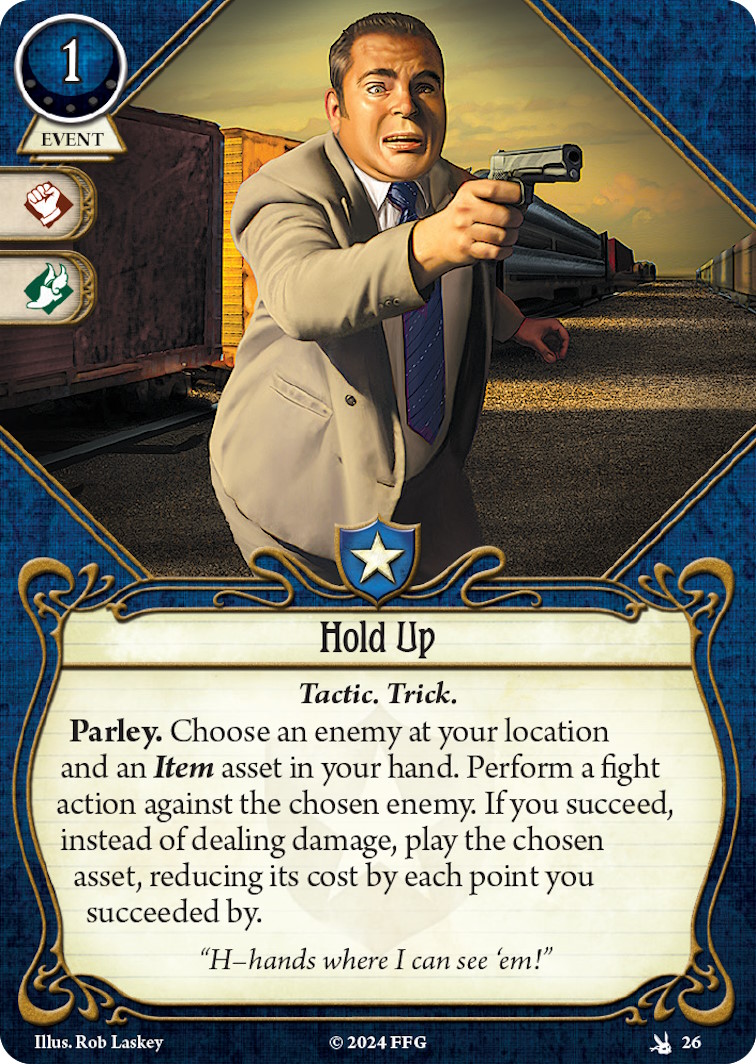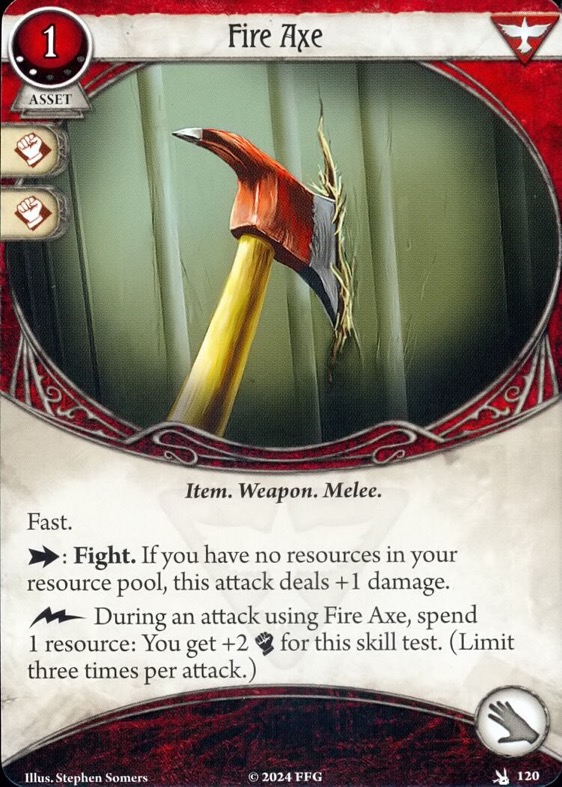
Beautiful card! I'm one of the guys who said that a card like this should have been in the core set, and would make Rogues in the early days a much better experience for new players. There are many situations where you will have 2 enemies on you, or your friend will have one engaged with them, so this in one action of your evasion saves you a whole turn basically, as you don't have to engage their enemy and then for the third action evade that enemy too! In reality, this is a real powerhouse of a card and is just a pure value, and will probably never whiff. It makes an evader of your group much more efficient. Simple, yet powerful, and will probably see a lot of play. Rita Young can take this too, which is just an icing on the cake!



